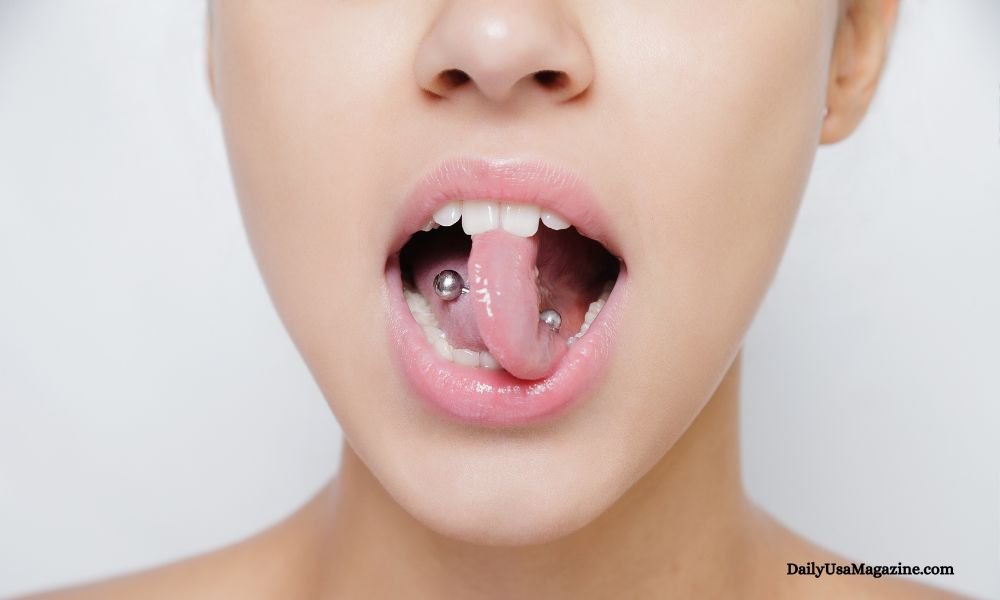A Trend That Bites Into Oral Health
Oral piercings have gained a reputation for their bravado and daring attitude. Often people ask about these piercings more in the context of fashion, instead of the medical approach. However, this trend may come at a steep price which is potential damage to your teeth and oral health.
In this article, different types of oral piercings, the complications associated with them, and their implications, in relation to oral health, are discussed. You will by the end know better the advantages and disadvantages and you will know what is right for you in relation to your health.
Understanding Oral Piercings
Oral piercings have been a great source of attraction for people of all ages since it provides a distinctive means of man’s individuality. Be it a vibrant tongue ring or a gentle lip ring, these ornaments turn the smiling face into a beautiful work of art. But how does this apply to your oral hygiene?
Types of Oral Piercings
There are different oral piercings, characterised by each having its own features and risks on a person’s mouth.
Tongue Piercings
Traditional towards the hump, basic types of tongue piercings include tongue piercing in the dorsoventral or dorsolateral area. The former type is the one that runs vertically through the tongue while the latter type is inserted in lateral position. Both ways do present an attraction but can cause destruction to oral health.
Lip Piercings
Lip piercings consist of labrets and Monroe piercings. They also serve to enhance some facial features. They can be cute but they come in contact with teeth and gums which can irritate or injure.
Cheek and Web Piercings
Caught far and less appealingly – cheek and web piercings are much less popular. Still, they can add a fun element to your look. But, their anatomical location poses a risk of complications.
Uncommon Piercings (Uvula)
Uvula piercings are a new frontier for people that are looking for a more extreme way of self-expression and self-mutilation. These piercings carry a perilous position at the back of the mouth mostly and they can help to affect speech and swallow activities meaning, a lot of health risks.
Risks and Complications of Oral Piercings
Though guaranteed to be the trendiest of fashion, piercings can harbour a lot of threats to your oral health.
Infection
Upon the insertion of oral piercings, there is also one main worry which is infection. Oral piercings provide a route for bacteria, which encourages the presence of additional bacteria. In extreme situations, these infections may endanger one’s health and general wellbeing.
Allergic Reactions
Allergy to metal is also a concern. Some members of the population will suffer metal allergy which is uncomfortable and irritating. In some rare cases, it is possible for nerve damage to complicate the condition.
Bloodborne Diseases
Unsafe piercing techniques may also lead you towards some blood-borne diseases like Hepatitis B, Hepatitis C infection and even HIV. This is why it’s important to maintain sterile conditions during performing these procedures.
Effects on Oral Health
Oral piercings are various and have a far reaching effect, especially on one’s dental health.
Gum Disease
The usage of piercings is uncomfortable because they also incorporate many parts that enter the gums which may cause infection. Some people may return their piercings after surgery as it is still quite fresh for them. This causes irritation and eventual recession of the gum which if untreated can develop into inflammation of the supporting structures of the tooth known as periodontitis.
Tooth Damage
Jewellery and teeth may physically come into contact with each other through direct contact; this can lead to tooth erosion and damage caused by the wearer. Common challenges include cracking and chipping, worn out tooth enamel, and increased tooth sensitivity.
Impact on Dental Work
If you already had any dental work done such as wearing metal braces, crowns, aka caps filling or bridges, it will make oral piercings difficult. Their presence cannot be seen as beneficial since the jewellery can interfere with these structures and alter their functional purpose.
Comparing Rings and Barbells
Rings, barbells, and twist tops have their own advantages and disadvantages with regards to oral piercings. However, which one is more damaging to your gums and teeth out of the two different kinds?
Material and Size Differences
Rings and barbells of the coloured portions are not uniform in size and material, which influences the sensation in your mouth. Usually, bigger and heavier ornaments are able to withstand more pressure, exposing an increased chance for damage. Also, some materials may be allergic to some people.
Impact on Teeth and Gums
Rings are on the head rather more free in mobility and so have a greater likelihood of contact with the teeth and gums. Such movement may aggravate and dissipation of a particular structure may occur as time goes on.
Barbells, in contrast, are more secure, although it is still possible to manage them poorly and induce considerable chipping or cracking. The decision to use rings or barbells relies on personal aesthetics and the present state of the mouth.
Prevention and Care Tips
Proper care of your oral piercings make it possible to reduce health risks considerably.
Professional Piercing Advice
It is best that you do not attempt to pierce yourself but rather go to a qualified professional, in order to reduce complications trying to do it yourself.
Oral Hygiene Practices
Good care practices are very fundamental to the health of the pierce and oral hygiene. Clean the mouth using a toothbrush and dental floss every day to ensure minimal accumulation of bacteria. A mouth rinse routine can also be included to prevent infection.
Monitoring for Complications
Regular dental checkups are important to catch any problems early. Your dental care provider is also able to look for some signs of infection or other complications and recommend measures if needed. Be on the lookout for any unusual symptoms such as pain or swelling and deal with them as soon as possible.
Making the Right Choice
Oral body modification is one of the bold ways to show off one’s uniqueness, however, it may pose some danger to the person’s oral cavity. Learning how to tell piercing types apart, how they will influence the work of your oral structures and how one is to manage the piercing will guide you with wisdom on how to practise the piercing in an alright way.
If you are thinking about having an oral pierce it is advisable to call or visit your dentist to discuss its advantages and disadvantages and limitations.
Frequently Asked Questions (FAQs)
Are oral piercings safe?
Oral piercings can be safe if completed in a hygienic environment by a qualified piercer, yet there is always an acceptably predictable risk with this procedure. Such risks include: – Infections, allergies, injury to teeth and/or gums, and disruption of dental work. Appropriate measures and hygiene must be put in place to reduce these risks.
What should I do if my piercing causes swelling or pain?
Expect some swelling and light discomfort in the beginning. In some cases, however, swelling and pain may continue for several days and dull wits possess pus with fever. It means that there is an infection. Contact a doctor or dentist in such cases.
How long does it take for an oral piercing to heal?
Swelling and other body healing times will widely differ depending on the type of piercing and one’s healing rates. On average, those who have tongue piercings are usually able to recover in about four to six weeks whereas for those with lip piercings it might last for around six to ten weeks. Following proper care instructions will aid in a smoother healing process.




